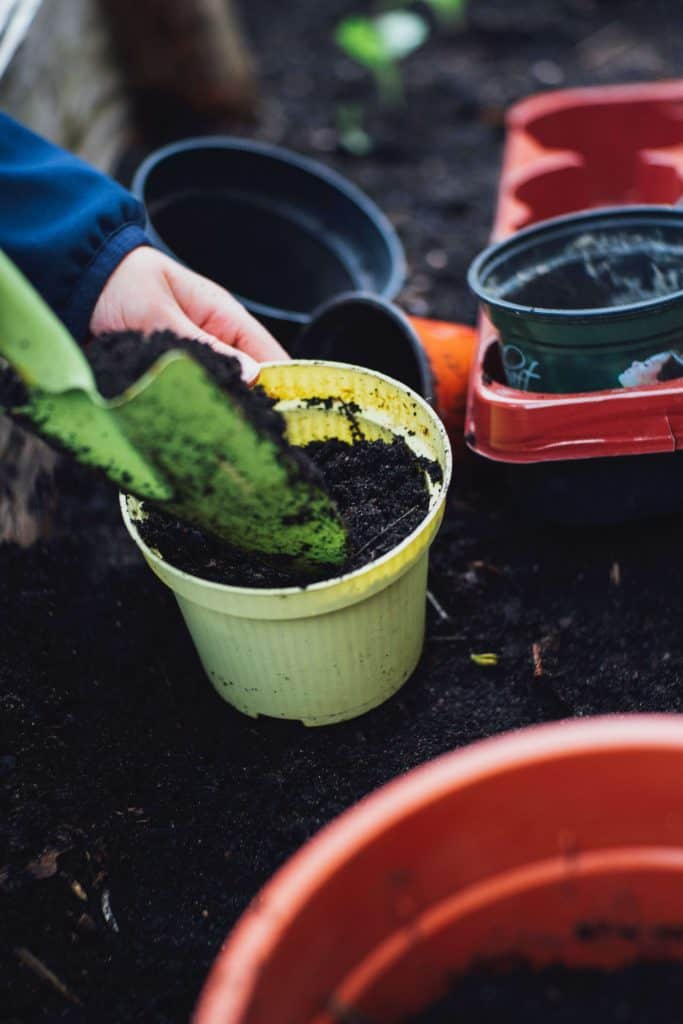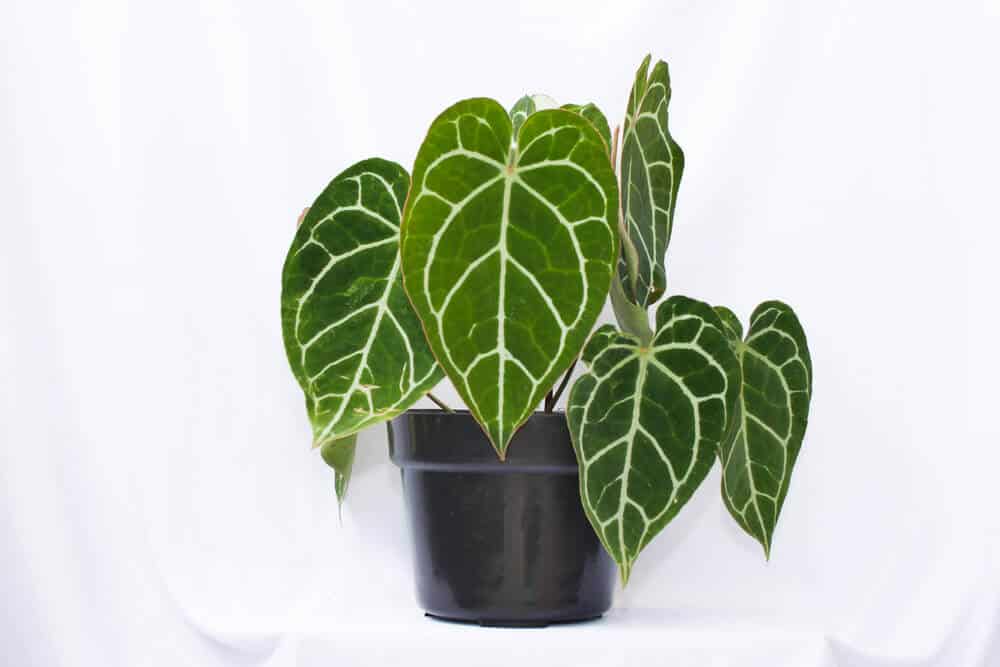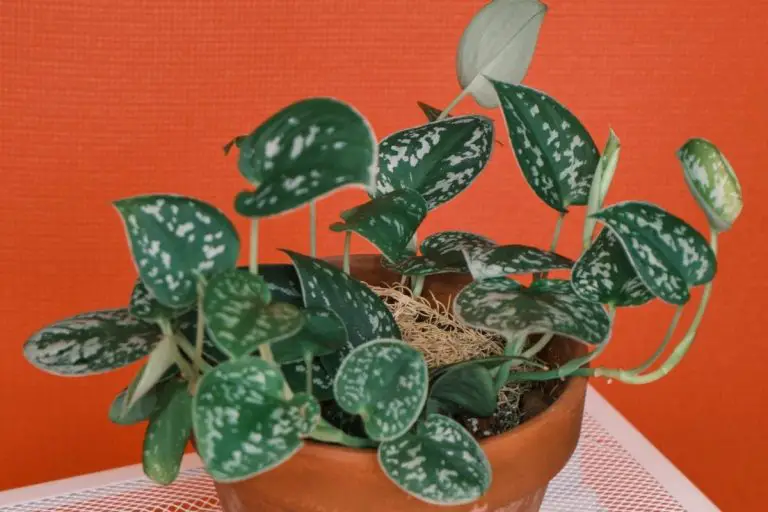Anthurium Clarinervium: The Most Effective Care Guide
Did you recently purchase an Anthurium Clarinervium and are wondering how to take care of it?
The popularity of gardening as a hobby has been growing in recent years and there are numerous benefits associated with spending time tending plants and taking care of them. More and more people are discovering a love for gardening and want to know how to provide the best care for their plants.
This ultimate care guide will tell you everything you need to know to ensure that your Anthurium Clarinervium receives the best care that it needs.
Here are the topics that will be covered in this care guide:
- About Anthurium Clarinervium
- How to Care for Your Anthurium Clarinervium
- Soil
- Water
- Light
- Temperature
- Humidity
- Fertilizer
- Propagating Anthurium Clarinervium
- Is Anthurium Clarinervium toxic?
- Is Anthurium a Good Indoor Plant?
- How Fast Does Anthurium Clarinervium Grow?
- 4 Common Problems with Anthurium Clarinervium and How to Solve Them
- 3 Tips for Keeping Your Anthurium Clarinervium happy
- If You Like Anthurium Clarinervium, You May Like These Plants
DISCLAIMER
Some of the links on here are affiliate links and I may earn if you click on them, AT NO EXTRA cost to you. Hope you find the information here useful! Thanks.
Related Articles:
- Pilea Glauca – The Ultimate Indoor Plant Guide
- The Best Practices to Care for Philodendron Birkin
- Snow Queen Pothos – Easy to Follow, Grow Care Guide
- Philodendron Florida Ghost – The Most Comprehensive Guide
- Philodendron Giganteum – Complete Care Guide
- Crassula Hottentot – Practical Care Guide
- Peperomia Polybotrya: Comprehensive Care Guide
About Anthurium Clarinervium

Anthurium Clarinervium is a unique-looking plant that has large thick leaves with a velvety texture that gives it the nickname “Velvet Cardboard Anthurium.” The dark green leaves are heart-shaped with lighter green veins and are extremely attractive.
The Cardboard Anthurium also produces flowers.
Unlike its more showy cousin, the Anthurium Andraeanum, the Anthurium Clarinervium flower is smaller and more delicate and usually appears in hues of pink and white. As your plant matures, small berries may develop after the flowers and these can produce seeds that can be used for propagating new plants.
Anthurium Clarinervium is from the Araceae family or more commonly called the aroid family and shares similar features and needs with other plants in the same family.
This plant is originally from Mexico, South America, and the Caribbean but has been growing in popularity as a houseplant all over the world. Some people may refer to the plant as Clarinervium Anthurium but the correct way to call it based on naming conventions is Anthurium Clarinervium.
Anthurium Clarinervium can sometimes be mistakenly identified as Alocasia Clarinervium or Philodendron Clarinervium due to similarities between Anthurium, Alocasia, and Philodendron plants.
An easy way to differentiate between the species is by examining the leaves:
- Anthurium has droopy heart-shaped leaves
- Alocasia has erect arrow-shaped leaves
- Philodendron often has narrow or palm-like leaves
How to Care for Your Anthurium Clarinervium
While not always easy, Anthurium Clarinervium care can be covered by making sure that you are meeting the plant’s needs in the following six areas:
Soil

Anthurium Clarinervium needs well-draining soil to ensure that it does not become waterlogged and causes root rot. While you can try a good quality retail potting mix, it might be more effective to add some additional elements to make the soil more suitable for your Anthurium Clarinervium.

Try including some of these elements in the soil:
- Orchid bark
- Perlite
- Charcoal
Ensuring that your Anthurium Clarinervium soil is at a suitable pH of 5.5 – 6.5 can also help to contribute towards keeping the plant healthy. If your soil is not acidic enough, you can add organic matter to your soil. You can check the pH of the soil with a kit.
This 3-in-1 soil tester kit by SONKIR helps you specialize in grasping when you need to water your plant.
Here is some common organic matter that is added to soil to make the pH level more acidic:
Water
Anthurium Clarinervium can be prone to root rot if the soil does not drain well and this can be very detrimental to your plant. It is important to ensure that you do not over-water the plant to help avoid this.
You should always check the dryness of the soil before you water the plant.
You can do this by pushing your finger about an inch into the soil. If it is dry, then you should water it. If the soil is still damp, you should wait a day or two before checking again.
Use a plug-in self-watering spike to ensure your plant gets a constant water supply!

Light
Anthurium Clarinervium can be quite picky about the type of light that it thrives in.
Too much or too little light can cause extensive damage to the plant. Ensuring that your plant receives suitable light will go a long way in keeping your Cardboard Anthurium healthy and happy.
The most important thing to avoid is direct sunlight as this can damage your plant. Providing indirect sunlight can help ensure that the plant receives enough light without overexposure.
Here are some suitable indoor locations to keep your plant:
- Near east-facing windows
- In bathrooms that receive a good amount of light
- A few feet away from southern or western facing windows
Temperature
Since the Anthurium Clarinervium is originally from a warmer climate, it doesn’t like it when the temperature is too cold.
It grows well in temperatures between 65℉ (18℃) and 73℉ (23℃). While the plant can survive in warmer temperatures up to 86℉ (30℃), it is best to avoid extreme temperatures as this can shock the plant.
Ensure your plant is growing in optimal growing condition by checking with a hydro thermometer!

Humidity
An environment with high humidity is essential for Anthurium Clarinervium and you should aim for humidity levels of 80-90% for it to truly thrive. The humidity levels will make a significant impact on your Cardboard Anthurium and should be a priority when you are caring for your plant.
Here are some things you can do to ensure that the humidity is high enough for your plant:
- Place the plant in the bathroom.
- Group plants together.
- Mist your plants every day.
- Get a room humidifier.
Fertilizer
Anthurium Clarinervium does not require much fertilizer to grow well. Just use your regular house plant fertilizer at a diluted strength every 2-3 months to provide some additional nutrients to help your plant stay healthy.

Propagating Anthurium Clarinervium
As your plant grows, you may want to propagate your Anthurium Clarinervium so that you have more manageable plant sizes or new plants to add to new locations in your home or to give as gifts to your family and friends.
There are 3 main ways that Anthurium Clarinervium can be propagated.
Division
The easiest and most common way that Anthurium Clarinervium is propagated is by division.
Propagation by division is a method by which a plant is separated into at least two sections. Each section will have an intact root as well as a stem and/or leaves. Each section can then be planted by itself and will develop into an individual plant.
This method also produces the highest success rate for propagation when done correctly.
Propagation by division can be done when the plant has more than one stem. It is best done when you are repotting as the plant needs to be separated at the stem and the roots and each plant should have a few leaves and some roots.
Repot each plant in the potting mix described above and give them a good watering and you will soon have more velvet cardboard anthurium plants.
Cuttings
Stem cuttings can be another way to propagate your Anthurium Clarinervium but it can be more tricky than division.
You will need to ensure that the cutting is around 3 inches long and there should be a few leaves. Getting a cutting is best done when you are pruning your plant and the cut should be made above a leaf node.
Before you plant the new cutting, it will need to be cured for a few days to allow a callus to form at the end. This will help ensure that your new plant will grow and not rot easily. Just leave the cutting out for about a week and allow the end to dry and form a callus.
Once the cutting has formed a callus, you can plant it in a new pot, water it, and place it in a suitable location. If the cutting is not strong enough to stand upright by itself, you can use a support to prop it up as it grows stronger.
Seeds
While not a common method for propagating Anthurium Clarinervium, you can also try planting the seeds that grow from the berries that develop in more mature plants. It can be a long process waiting for your plant and the berries to mature and this is why seeds are not commonly used for propagation.
Use organic, Non-GMO, self-pollinated seeds!

If your plants do end up producing berries, you can plant them as you normally plant other seeds. With the right soil and watering, you can sit back and wait for your new plants to pop up.
Is Anthurium Clarinervium Toxic?
Anthurium Clarinervium is toxic to humans and pets as it contains insoluble calcium oxalate crystals.
The sap from the Anthurium Clarinervium can cause skin irritation while chewing or eating the plant can cause vomiting, nausea, and other symptoms. Medical treatment should be sought immediately.
If you have children or pets in your home, be sure to keep the Clarinervium plant out of their reach.
Is Anthurium a Good Indoor Plant?
Anthurium can be grown successfully indoors by making sure that their needs are met mostly related to sunlight, water, and humidity.
Once you master the knack of caring for your Anthurium Clarinervium, it will thrive indoors and you will find yourself making excuses to stop by and look at it all the time and making sure your guests see it every time they visit.
Anthurium is also on NASA’s list of best air-cleaning plants and will help to purify the air in your home.
Place your indoor plants in hanging baskets for an aesthetically pleasing decor!

How Fast Does Anthurium Clarinervium Grow?
The Anthurium Clarinervium growth rate will depend on its care and environment.
If the environment and care provided meet the plant’s needs, the stem and leaves will grow strong and big and it will flourish. The Anthurium Clarinervium needs to be repotted on average every 2-3 years and will require some extra care after it is repotted as it adjusts to the new space.
4 Common Problems with Anthurium Clarinervium and How to Solve Them
Leaves Look Dull
If the leaves of your Anthurium Clarinervium are looking dull, chances are that your plant is not getting enough light. You can remedy this problem by moving the plant into an area that receives indirect or filtered sunlight.
Leaves Drying Up
If the leaves on the plant start to dry up, the plant could be receiving too much direct sunlight and it is too hot for the plant as a result. Provide more filtered sunlight or indirect sunlight and watch your plant get healthier again.
Leaves Turning Yellow
If you notice that the leaves on your plant are turning yellow and/or wilting, the plant is likely being overwatered and it may be leading towards root rot.
Check the moisture level in your soil and if it is too wet, stop watering it for a couple of days. If the condition doesn’t begin to improve, consider re-potting your plant with new soil that has better drainage.
Leaves Turning Brown
When the leaves on your cardboard anthurium start turning brown, the most likely reason for this is that the air is too dry and the humidity levels are too low.
You can try to move the plant to an area with higher humidity such as a bathroom or you can increase the humidity levels where the plant is by using a room humidifier or grouping plants together to trap more moisture in the air.
3 Tips for Keeping Your Anthurium Clarinervium Happy
If you are looking for some tips on Clarinervium care, these 3 tips will make a big difference in ensuring that your plant stays happy.
- Provide sufficient indirect or filtered sunlight to your plant.
- Ensure that the humidity is high enough to mimic its natural environment.
- Give your plant well-draining soil.
This Potting Mix by Miracle-Gro it’s definitely one of the best options in terms of quality and price. Check it here
If You Like Anthurium Clarinervium, You May Like These Plants
Anthurium Andraeanum

This is the plant that most people think about when you mention Anthuriums. Also known as Flamingo Lilies, the Anthurium Andraeanum has bright red waxy flowers and dark green heart-shaped leaves.
Anthurium Magnificum

Like Anthurium Clarinervium, Anthurium Magnificum is usually grown for its leaves instead of its flowers. The large leaves are thick and velvety like the Cardboard Anthurium but the plant tends to grow much bigger.
Anthurium Crystallinum

The Anthurium Crystallinum gets its nickname, “The Ace of Spades” from the shape of the foliage that can grow as big as 2 feet wide. The plant and care are similar to the Anthurium Clarinervium and adds a certain pizazz to your collection of plants.
Anthurium Vittarifolium

Anthurium Vittarifolium looks slightly different than the other plants on this list. It has long thin pendulous leaves and is classified as a strap-leaf Anthurium. This plant grows well as a hanging plant and produces pretty red flowers and pink berries. Look out for the variegated varieties as they look amazing!
Conclusion
If you are looking to buy Anthurium Clarinervium, you can check out your nearest plant nurseries or online gardening stores.
It may not always be in stock but is worth the wait! The Anthurium Clarinervium price will depend on local availability and conditions.
Now that you know how to care for Anthurium Clarinervium, don’t hesitate to pick one up the next time you see an Anthurium Clarinervium for sale. Your Anthurium Clarinervium buy will add a new friend to your plant family that you will enjoy for a long time.




![How To Harvest Cilantro Without Killing The Plant?[The Best Way!]](https://aboveandbeyondgardening.com/wp-content/uploads/2022/10/how-to-harvest-cilantro-without-killing-the-plant-6-768x512.jpg)
![How To Harvest Oregano Without Killing The Plant? [Personal Experience!]](https://aboveandbeyondgardening.com/wp-content/uploads/2022/10/How-To-Harvest-Oregano-Without-Killing-The-Plant-7-768x442.jpg)


